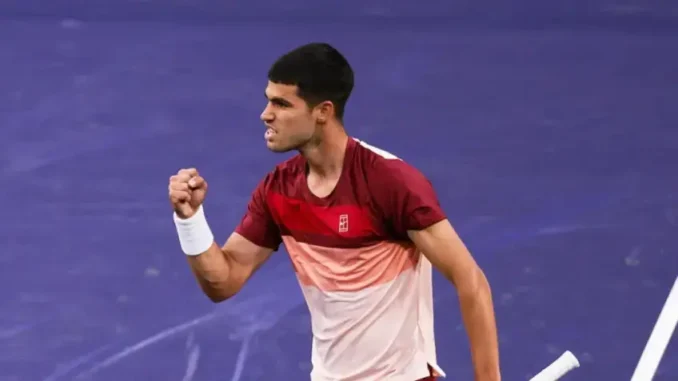
A former luminary of the ATP tour has recently voiced concerns regarding the trajectory of Carlos Alcaraz, the electrifying young Spaniard who has rapidly ascended the ranks of professional tennis. While acknowledging the undeniable talent and captivating style of play that have propelled Alcaraz to Grand Slam glory and the world number one ranking, the seasoned veteran articulated specific worries about the sustainability of his current approach and the potential long-term implications for his career.
The former ATP star, whose own career was marked by significant achievements and a deep understanding of the sport’s physical and mental demands, did not mince words when discussing the aspects of Alcaraz’s game that give him pause. He emphasized the incredibly high-intensity nature of Alcaraz’s matches, characterized by explosive movements, relentless court coverage, and a seemingly endless wellspring of energy. While these attributes have undoubtedly contributed to his early success, the former player cautioned that such an all-encompassing and physically taxing style might prove difficult to maintain over the course of a lengthy career.
“The way he plays, it’s so energetic, so dynamic,” the former ace reportedly commented, highlighting the visual spectacle that Alcaraz brings to the court. “He’s all over the place, hitting unbelievable shots, but you have to wonder if his body can withstand that kind of punishment year after year.” This observation speaks to the delicate balance that all professional athletes must strike between pushing their physical limits to achieve peak performance and preserving their bodies to ensure longevity in their careers.
The former player drew upon his own experiences and the careers of other top athletes to illustrate his point. He suggested that while youthful exuberance and a seemingly unbreakable physique might carry a player through the initial stages of their career, the cumulative toll of high-impact movements and constant exertion can eventually lead to injuries and burnout. “Tennis is a marathon, not a sprint,” he stated, emphasizing the importance of pacing and strategic energy conservation over the long haul. “You see so many young players come out with incredible talent, but not all of them manage to stay at the top for a decade or more. The physical demands are just immense.”
Specifically, the former ATP star expressed concern about the amount of time Alcaraz spends sliding on the court, particularly on the hard courts that dominate much of the professional season. While sliding can be an effective defensive tactic and allows players to retrieve seemingly unreachable balls, it also places significant stress on the joints, particularly the ankles, knees, and hips. “He slides a lot, even on hard courts, which is impressive in terms of agility but also worrying,” he noted. “Those kinds of movements put a lot of strain on the body, and it’s something that can catch up to you later in your career.”
Beyond the physical aspects, the former player also touched upon the mental toll of maintaining such an aggressive and high-octane style of play. He suggested that the constant pressure to perform at an exceptional level, coupled with the mental energy required to sustain such intensity throughout a match, could eventually lead to fatigue and a potential dip in motivation. “It’s not just about the body; it’s also about the mind,” he explained. “Playing like that, always at 100%, requires an incredible amount of mental focus and resilience. It’s a lot to ask of anyone, especially someone so young.”
While acknowledging Alcaraz’s remarkable achievements thus far, the former player emphasized the need for the young Spaniard to potentially evolve his game and incorporate elements of strategic variation and energy conservation. He suggested that learning to win matches without consistently pushing his body to its absolute limit could be crucial for his long-term success and career longevity. “He has so much talent, he can hit so many different shots,” the former ace remarked. “Perhaps as he matures, he will learn to pick his moments, to be more selective with his energy expenditure. That could be the key to him staying at the top for many years to come.”
Ultimately, the concerns voiced by the former ATP star stem from a place of experience and a deep understanding of the rigors of professional tennis. While recognizing the extraordinary talent and captivating appeal of Carlos Alcaraz, his cautionary words serve as a reminder of the delicate balance between youthful exuberance and the long-term demands of a career at the pinnacle of the sport. Whether Alcaraz can adapt his game and manage the physical and mental toll of his high-intensity style remains to be seen, but the worries expressed by a seasoned veteran offer a valuable perspective on the challenges that lie ahead for the young Spanish sensation.
Leave a Reply